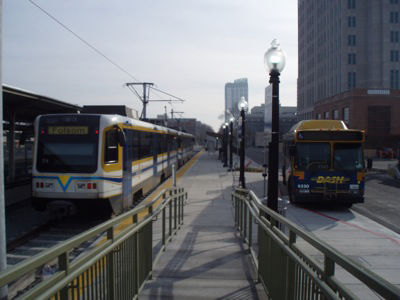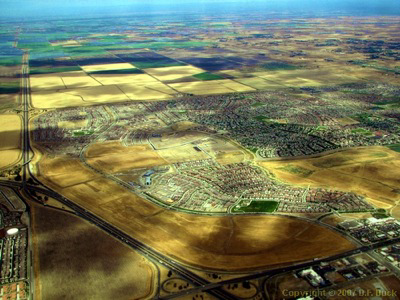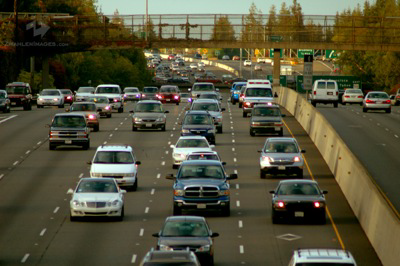No Light Rail in Vancouver!
The Ship Is Sinking, So Stay the Course

In his 1989 book, The New Realities, Peter Drucker wrote,
Above all, any government activity almost at once becomes “moral.” No longer is it viewed as “economic,” as one alternative use of scarce resources of people and money. It becomes an “absolute.” It is in the nature of government activities that they come to be seen as symbols and sacred rather than as utilities and means to an end. The absence of results does not raise the question, Shouldn’t we rather do something different? Instead, it leads to a doubling of effort; it only indicates how strong the forces of evil are.

“Despite a focus on luring drivers out of their autos,” Sacramento transit mainly carries people who “do not have access to an auto.”
Flickr photo by paulkimo9.
I thought of this quote when reading Sacramento’s 2006 Metropolitan Transportation Plan. In a remarkably candid review of the region’s previous transportation plans, this document states:
“Many expectations during the past 25 years have not worked out.
• Sprawl around the edges continues to out-
• Even though gasoline prices are at an all-
• Even so, total smog emissions from motor vehicles are now half what they were in 1980, because technology has reduced auto emissions by 98 percent from 1980 models.
• Lack of road building and the resulting congestion have not encouraged many people to take transit instead of driving, even at the extreme congestion levels seen in big cities like Los Angeles. Instead, drivers move onto neighborhood streets, seeking to avoid heavy traffic.
• A 1999 Sacramento Regional Transit survey showed that half of those who commute
on transit, and three-
• Shipping of goods by truck has ballooned, instead of shifting to railroads, with
trucks serving as rolling warehouses feeding just-
The above is from page 3 of the plan; I added the bullets for clarity.

Despite a planning emphasis on infill development, Sacramento is still sprawling across the Central Valley.
Flickr photo by DFDuck.
In essence, the plan admits that past plans, which aimed to reduce congestion and air pollution by changing people’s behavior, have failed. Moreover, plans to create a more compact community failed. The only thing that succeeded was the technological improvements to autos that reduced air pollution. As the Antiplanner has noted before, behavioral solutions don’t work; technical solutions do.
So what does the plan propose to do? “The 2006 MTP continues the direction of the MTP 2025,” says page 4. This includes “transportation funds for community design, to encourage people to walk, bicycle, or ride transit” and giving “first priority to expanding the transit system.”

Despite the failure of past plans, Sacramento’s latest plan continues to put faith before reality and focus on transit, cycling, and walking rather than relieving congestion.
Flickr photo by innov8.
In short, exactly as Drucker describes, planners admit that their plans don’t work — so they are going to redouble their efforts. On one hand, it is too bad that planners in other regions are not more candid about the failure of their plans. On the other hand, it is too bad that planners everywhere take so long to learn the lessons of their failures.
24
Trackback • Posted in Transportation, Why Planning Fails
Reprinted from The Antiplanner